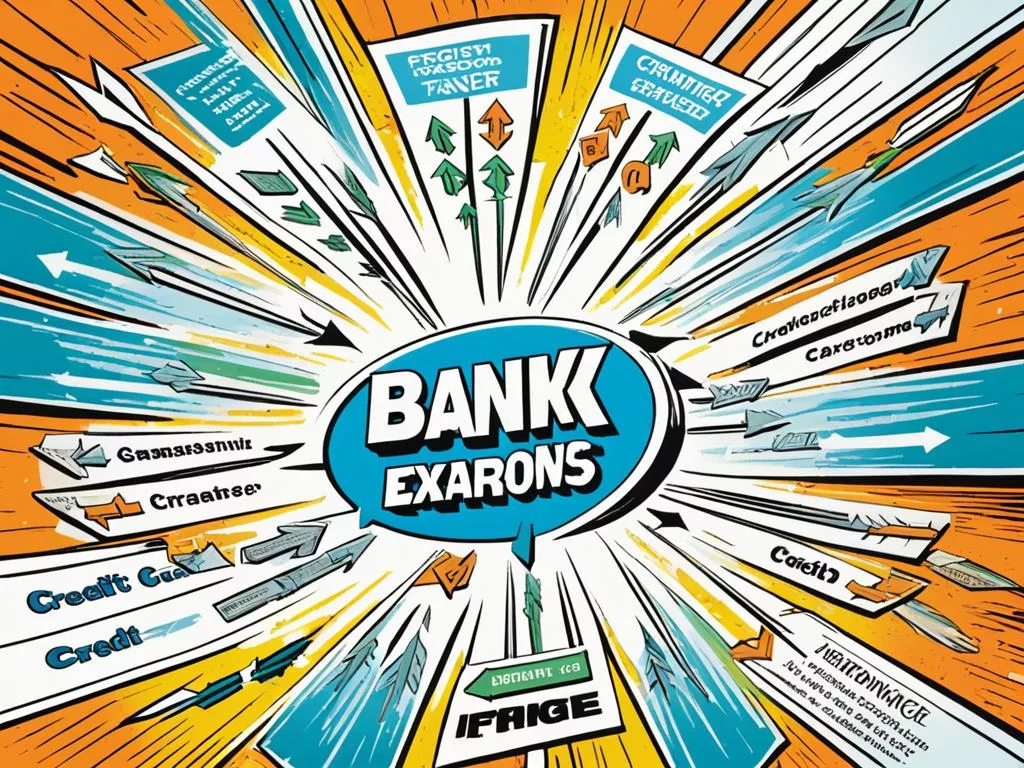When you buy things from another country, knowing about currency exchange fees is key to keeping costs down. These fees usually include a network charge, often about 1% from companies like Visa or Mastercard. They also add an issuing bank fee, which can add up to 2% more to your expenses1. It’s important to check your credit card’s terms to uncover these fees. They might not be easy to find.
Transactions are marked as “foreign” by banks if they’re processed through a foreign bank or in a different currency. This is vital info for those who shop or do business overseas often.
To reduce foreign transaction fees, I found that some banks like Capital One and Discover don’t charge these fees on their cards. If you travel a lot or buy things from other countries, choosing the right credit or debit card is crucial. Go for ones without these extra fees. Also, look for ATM cards that don’t charge for withdrawals abroad, as this can save a lot of money.
Be careful of dynamic currency conversion offers when you’re paying. Even though they seem convenient, they can give you worse currency conversion rates than usual.
I suggest paying attention to the fact these fees usually don’t count towards reward programs. This means you won’t earn cash back or points on these extra costs. Therefore, finding ways to avoid or lower currency exchange fees is a smart move. Especially if you’re often dealing with international transactions or travel.
Understanding Currency Exchange Fees and Their Impact
When traveling abroad or shopping from international websites, it’s essential to understand currency exchange. Knowing about foreign transaction fees and exchange rates is crucial. It can impact how much we spend or save during our global adventures. By finding ways to cut down on exchange fees and get better rates, we can protect our wallets.
Credit card companies may charge up to 3% for transactions in other countries2. For example, Chase and U.S. Bank can add these fees. They might charge a 1% fee for the network, like Visa or MasterCard, and an additional 2% themselves2. These fees add up quickly. That’s why savvy travelers often compare rates to avoid unnecessary costs. Capital One offers cards without these hefty fees, a plus for budget-conscious individuals2.
Exchange rates can make a big difference in how much money we get. For instance, in July 2022, $1 could exchange for €1.023. If the rate changes, you could end up with more or less money. This shows why comparing rates is important for saving money when traveling.

In global finance, some currencies have fixed rates to the U.S. dollar. The Hong Kong dollar is pegged at 7.75 to 7.85 USD3. China uses a managed approach, letting the yuan trade within a small range3. These methods impact the vast forex market. Thus, understanding exchange rate strategies is crucial for businesses dealing internationally3.
Here are some strategies to avoid high fees:
- Choose credit cards that don’t have foreign transaction fees, like those from Capital One, to avoid up to 3% fees per transaction2.
- Always compare exchange rates to make sure you’re getting the best deal, especially in markets like forex3.
- To avoid high conversion fees from merchants, always pay in the local currency. These fees can reach 18%2.
- Being informed about the current exchange rates is beneficial. A rate of 100, for example, means 1 U.S. dollar equals 100 yen3.
- Exchange rates impact business costs and consumer demand across different countries3.
Making smart decisions about currency exchange can lead to big savings. By using tools to compare exchange rates and choosing credit cards wisely, we can navigate international markets more effectively. Understanding exchange rates and fees helps us manage our money better when we’re abroad.
Guide to Currency Exchange Fee: Identifying and Avoiding Hidden Charges
Traveling opens the door to new adventures, but currency exchange fees can dim the excitement. Back in the ’90s, traveler’s checks were popular for overseas spending, peaking at $9 billion in use. Now, they’ve fallen to $4 billion4. It’s crucial to understand how different cards handle foreign transaction fees. Some banks offer cards with no foreign fees, making travel easier and cheaper4.
To cut down on exchange costs, I always weigh my options. Prepaid cards help avoid carrying much cash, but they may have high fees4. Being aware of the cash advance APR is critical, as some rates hit over 20%. I lean towards credit cards designed for travelers to avoid these costs4.
Hidden fees need careful attention, especially dynamic currency conversion, which can lead to double charges on one transaction4. By understanding exchange rates, I make sure I’m getting a fair deal. Knowledge lets me enjoy my travels fully, without unexpected costs4.

